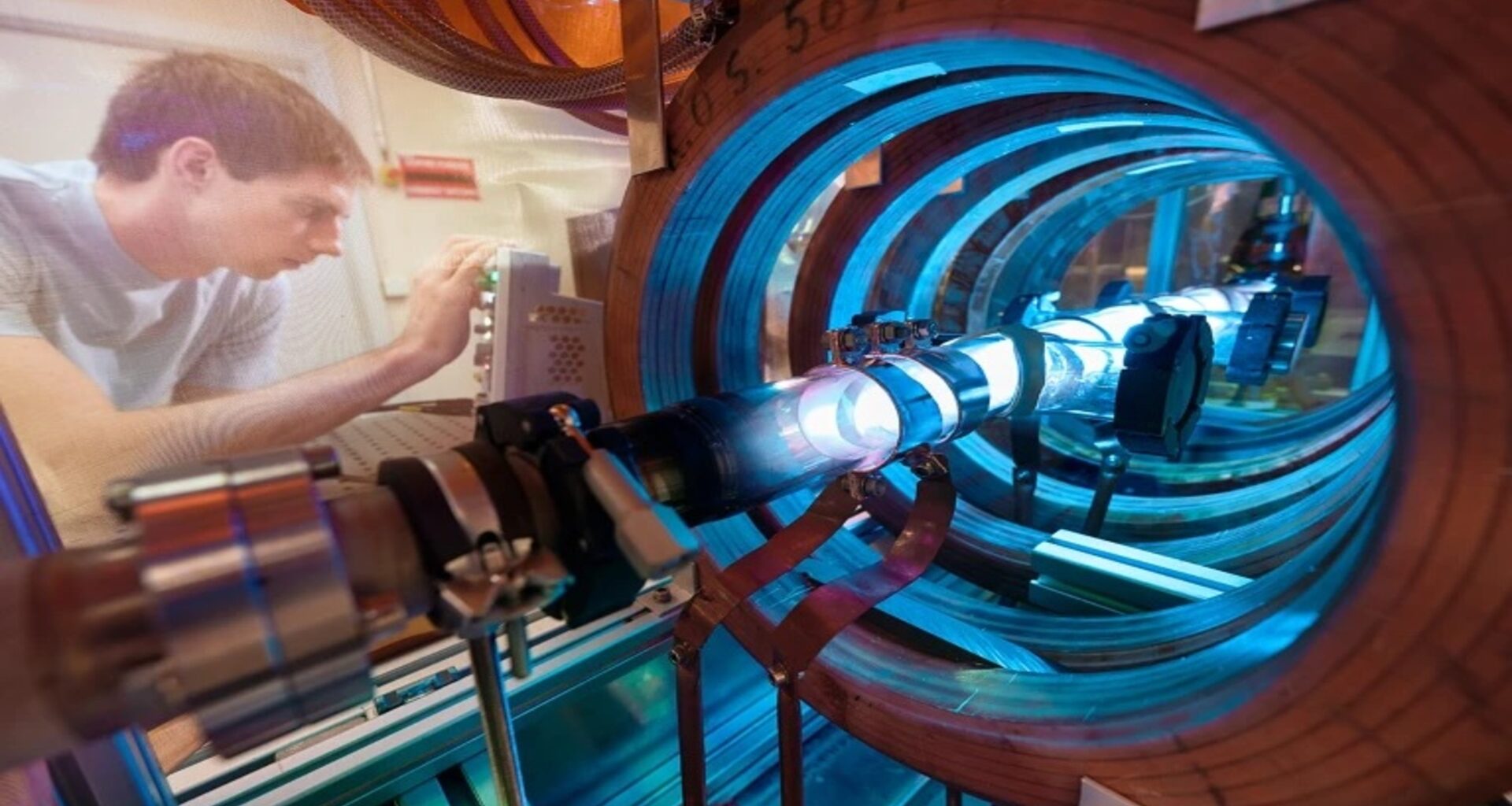An international team of researchers is pushing forward with plans for a radically smaller, cheaper particle accelerator by using a powerful technique that’s been decades in the making, known as the wakefield acceleration.
The approach, which scientists have studied since the 1970s but is now making rapid advances, involves electrons riding a wave of plasma, an ionized gas created using either another particle beam or a laser.
Unlike conventional accelerator cavities that use electromagnetic fields to propel particles – like those at the Large Hadron Collider (LHC) – are prone to sparking at high field strengths, plasma-filled modules can withstand much more intense conditions.
This allows Wakefield technology to accelerate particles up to 1,000 times faster than conventional methods within just a few centimeters. If successfully scaled, it could transform today’s massive, kilometer-long accelerators into compact, lab-sized machines, thus cutting costs and reshaping the future of particle physics.
“Now is where the rubber meets the road,” Spencer Gessner, PhD, an assistant professor of particle physics and astrophysics at California’s SLAC National Accelerator Laboratory and Stanford University, and one of the research team’s experts, says.
“We need to make that transition from interesting science to building accelerators,” Patric Muggli, PhD, an accelerator physicist at Germany’s Max Planck Institute for Physics, continues.
Building the collider
Physicists rely on particle accelerators to probe the fundamental building blocks of matter and discover entirely new particles. However, one of the key challenges for wakefield accelerators lies in connecting multiple plasma chambers to reach collider-level energies, while also producing stable, uniform, and precisely controlled beams.
“We have to make up our mind,” Muggli says, explaining that researchers still face major decisions, from choosing the most promising type of wakefield accelerator to figuring out how to accelerate positrons effectively, the more difficult antimatter counterparts of electrons.
The team plans to spend the next four years tackling key technical challenges and pinpointing the most promising approach for a demonstrator machine that could be built within the next decade. Their goal, according to Gessner, is to make something concrete.
Meanwhile, Nicole Hartman, PhD, an experimental particle physicist at Germany’s Technical University of Munich (TUM), believes wakefield acceleration can significantly reduce the size and cost of future colliders while offering a flexible and scalable solution for particle acceleration. “If I were a billionaire, this is 100 percent what I would fund,” Hartman adds.
Although wakefield technology isn’t yet mature enough for the next planned collider, a so-called Higgs factory designed to collide electrons and positrons for precision studies as the LHC’s successor, it still holds strong potential for the following collider.
Experiments carried out last year at the Lawrence Berkeley National Laboratory in California showed that a laser-driven wakefield could accelerate electrons to 10 billion electronvolts (eV) over just 30 centimeters, which is approximately one-tenth of the energy achieved by the Large Electron Positron Collider, across 27 kilometers.
Significant progress
Wakefield acceleration supporters believe that a version of the technology could be ready to power an upgrade to the planned Higgs factory by the 2050s. The upgrade would increase the machine’s energy capacity twentyfold, from roughly 500 billion to 10 trillion electronvolts, thus opening the door to discovering new particles and forces.
As a result, the U.S. Particle Physics Project Prioritization Panel, which helps shape national research funding decisions, recommended further investigation into wakefield acceleration as a potential pathway, alongside alternatives like a muon collider, in 2023.
Whether Wakefield technology is adopted depends on Europe’s upcoming decision for the LHC successor. Many physicists favor exploring wakefield acceleration, particularly if a linear collider is selected. However, CERN currently prefers a circular collider design, and it is already investing heavily in its development, which may eventually run proton collisions without wakefield technology.
However, according to Muggli, wakefield acceleration could be used elsewhere regardless of CERN’s collider choice. China’s proposed electron–positron collider, a potential European competitor, may incorporate wakefield technology in its injector system.
The technique could also enable compact synchrotrons and free-electron lasers for X-ray analysis of materials and biological samples. “We can contribute, even if not in the next collider,” Muggli concludes.
